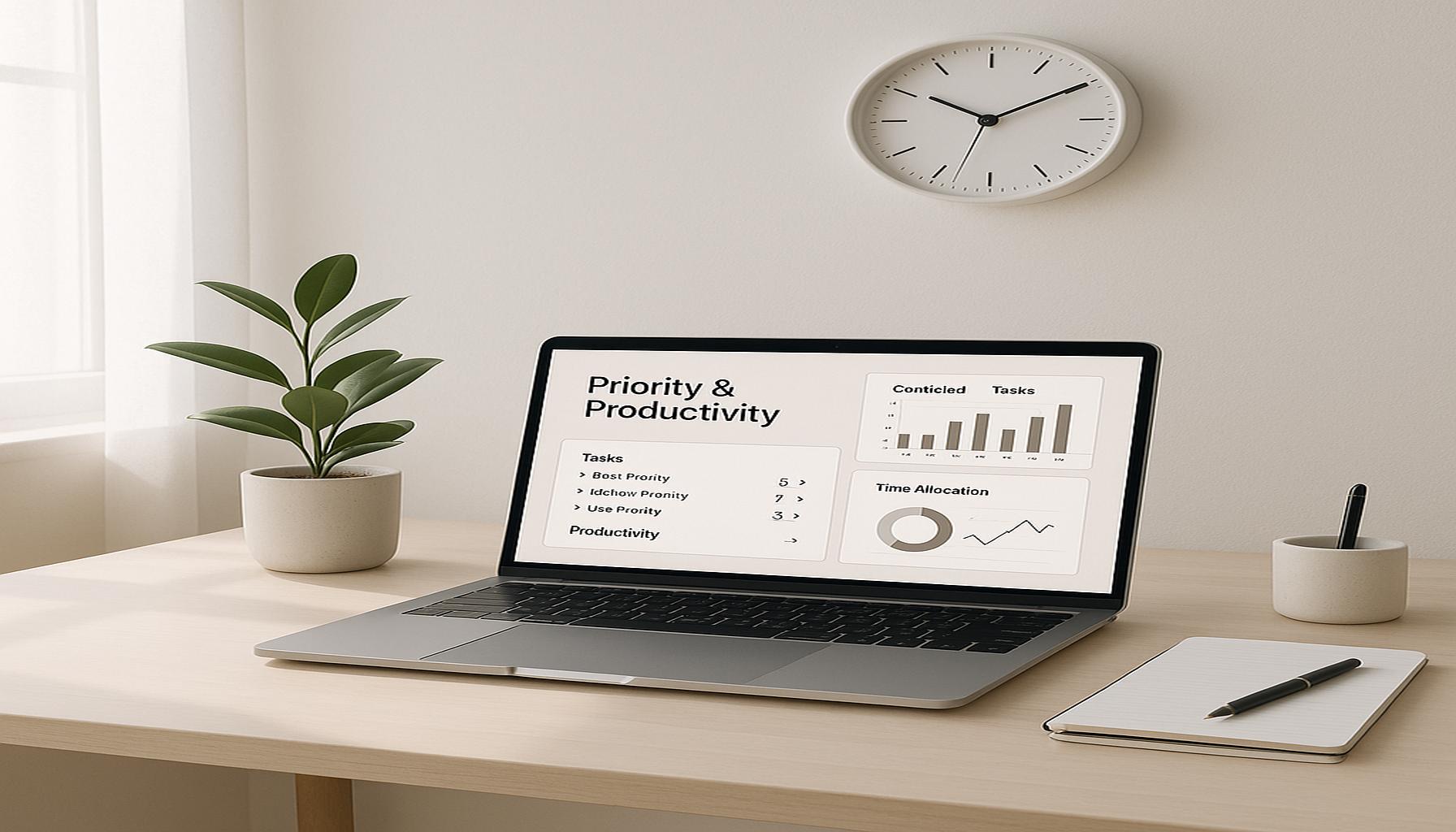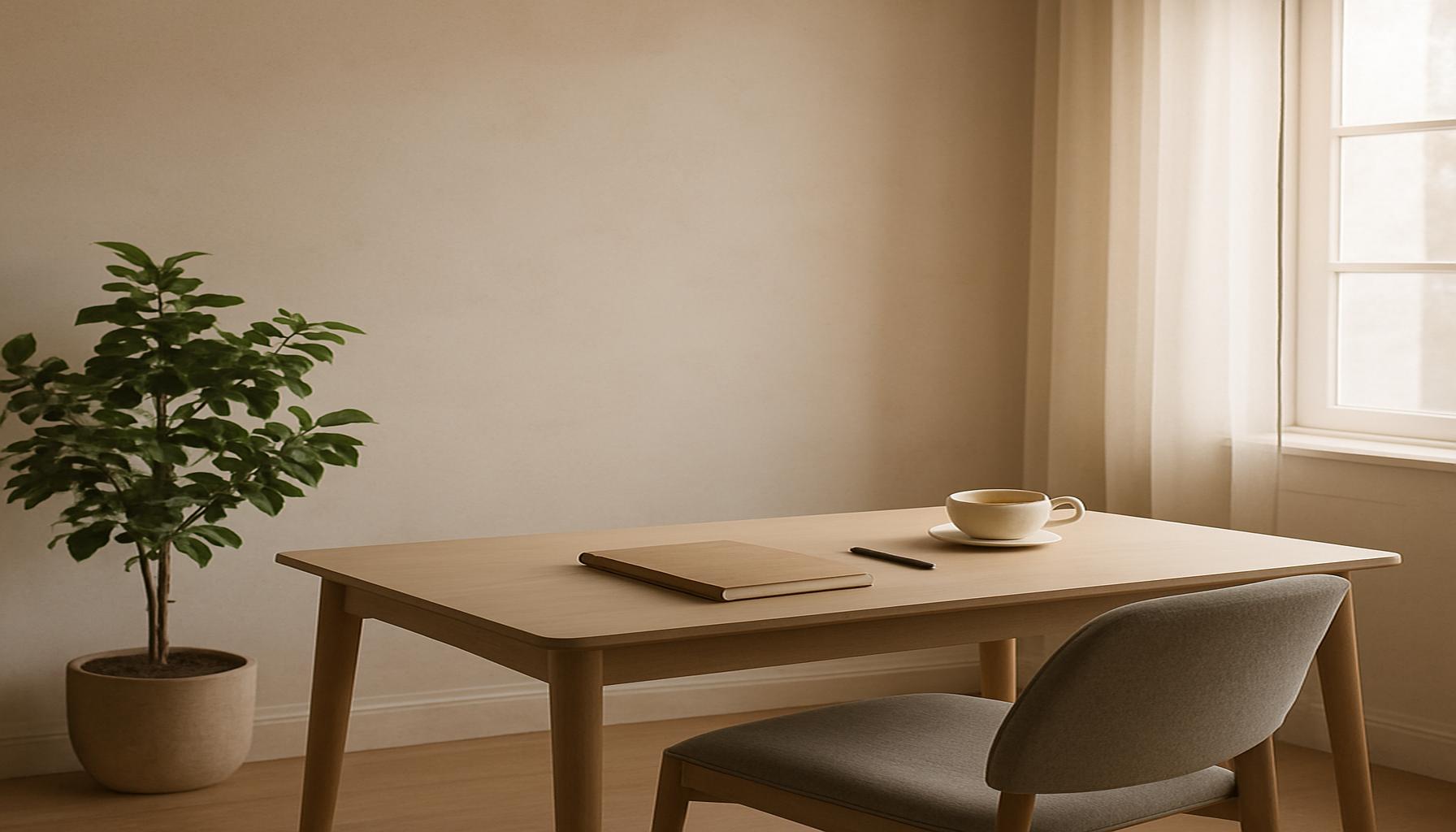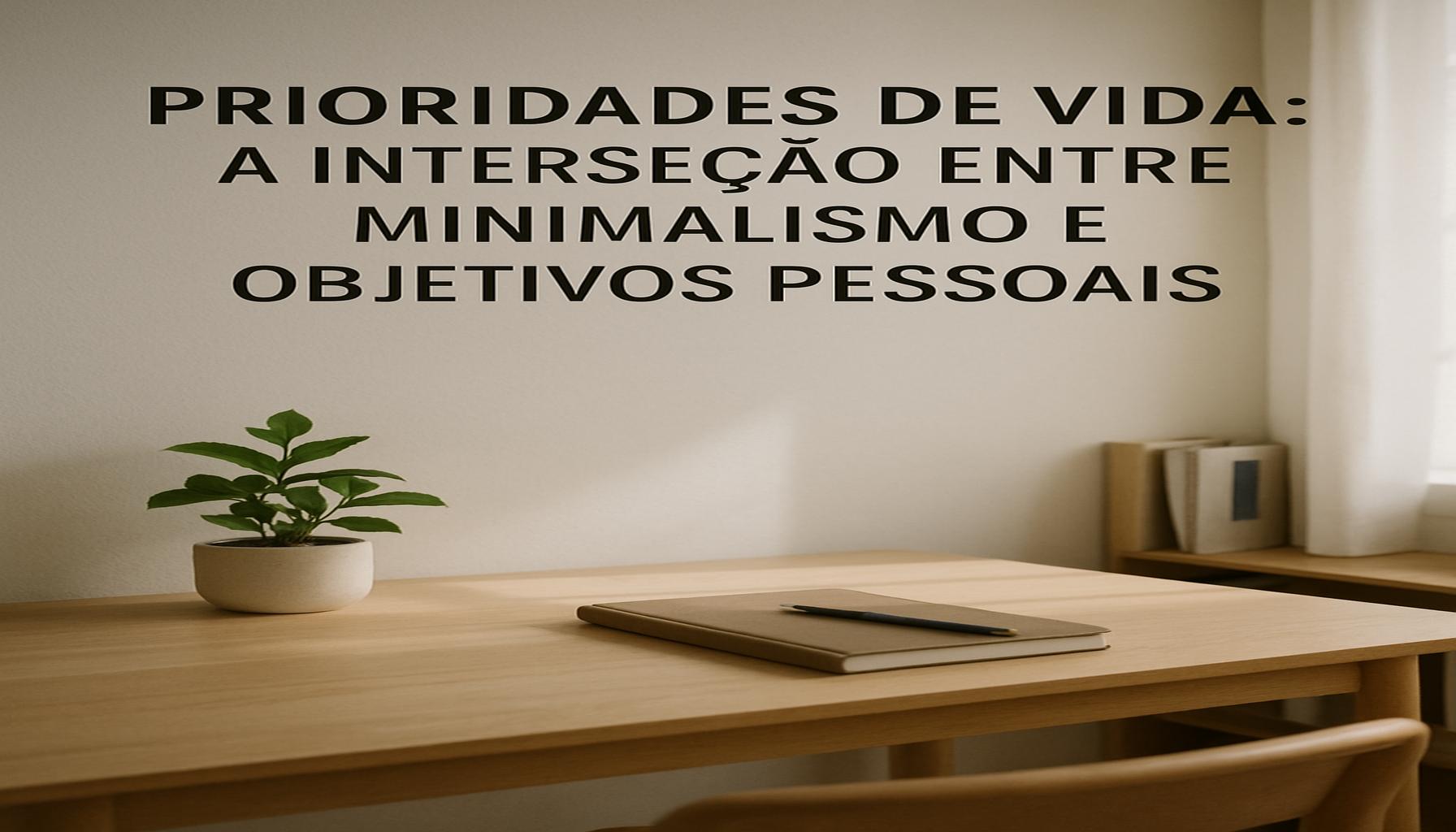Priority and Productivity: How Minimalism Can Increase Your Daily Efficiency

The Power of Minimalism in Boosting Productivity
In today’s fast-paced world, where distractions and clutter can be overwhelming, the pursuit of enhanced productivity often feels like a never-ending battle. Embracing minimalism can be a radical yet effective way to reclaim your time, energy, and focus by eliminating the unnecessary and concentrating on what truly matters. Minimalism encourages simplicity in various aspects of life, creating a pathway toward greater efficiency and well-being.
What does adopting a minimalist approach really involve? Here are some essential components that illustrate this transformative lifestyle:
- Decluttering: The process of removing unnecessary items from your environment is one of the first steps in minimalism. A clutter-free home or workspace allows for a clearer mind and promotes better concentration. For example, studies suggest that individuals who maintain a tidy workspace experience less stress and are able to focus more effectively on their tasks. Think about how much easier it is to work in a clean, organized space compared to one filled with distractions.
- Prioritization: Minimalism urges you to identify and concentrate on your most critical tasks. By narrowing down your focus to what is essential, you foster deeper engagement and enhance your efficiency. For instance, adopting the “80/20 rule,” which breaks down that 20% of your efforts can yield 80% of your results, can help in determining where to allocate your time and resources most effectively.
- Mindfulness: Practicing present-moment awareness can significantly improve decision-making and reduce stress levels. Minimalism encourages you to be intentional about your actions, leading to more deliberate choices throughout the day. Engaging in daily mindfulness practices, such as meditation or simple breathing exercises, can enhance your ability to stay focused on your priorities.
Research underscores the positive impacts of minimalism on daily life. For example:
- Reducing stress from clutter can lead to improved mental health, positively affecting emotional well-being and relationships.
- Fewer distractions enhance concentration, allowing you to dedicate more energy to essential projects instead of spreading yourself thin.
- A simplified routine conserves both time and mental energy, enabling you to allocate these resources toward activities that foster personal and professional growth, such as learning or exercising.
With these guiding principles, minimalism emerges as not just a trend in home decoration but as a robust strategy for enhancing daily efficiency. As you delve deeper into this lifestyle, consider how stripping away the non-essential can lead to clearer thinking and more productive outcomes. The journey may be gradual, but the rewards of minimalism can significantly reshape how you approach both your work and personal life. Why not take the first step today and assess one area of your life where you can simplify and enhance your focus? The possibilities are endless.
DISCOVER MORE: Click here for effective organization tips

Understanding Minimalism: A Framework for Enhanced Prioritization
To grasp how minimalism can propel productivity, it’s crucial to recognize its foundational principles that forge a path toward increased efficiency. By focusing on priority, minimalism acts as a filter, allowing individuals to sift through myriad obligations and distractions, honing in on what truly drives progress. The essence of prioritization in a minimalist lifestyle revolves around three core elements: understanding your genuine needs, streamlining processes, and embracing the value of saying no.
Identifying Genuine Needs
A significant aspect of minimalism is discerning what is genuinely necessary in your life. This evaluation extends beyond material possessions to include time, commitments, and energy. Engaging in a candid assessment of your daily tasks can pinpoint critical responsibilities that align with your goals. For instance, productivity tools like task management apps can help in visualizing your priorities. By categorizing tasks based on importance and urgency, you enable yourself to allocate your time more judiciously.
Streamlining Processes
Another tenet of minimalism is the streamlined approach to daily processes. By simplifying the way you tackle responsibilities, you reduce wasted effort and eliminate redundancies. Consider implementing techniques such as:
- The Pomodoro Technique: Work in focused intervals, typically 25 minutes, followed by short breaks. This method is beneficial in maintaining high levels of concentration while minimizing mental fatigue.
- Batch Processing: Group similar tasks together to reduce the mental load associated with constant switching between different activities. This can include setting aside specific times for answering emails or returning phone calls.
- Automating Mundane Tasks: Utilize technology to automate repetitive tasks, such as bill payments or scheduling social media posts. This not only conserves time but allows you to focus on higher-priority projects.
The Art of Saying No
The ability to say no is one of the most powerful facets of minimalism that directly influences productivity. In a culture that often glorifies busyness, saying no can be an act of self-preservation. It protects your time and energy, allowing you to dedicate your efforts toward the tasks that matter most. A simple strategy is to assess new commitments against your existing workload and goals: If it doesn’t align, politely decline. This not only safeguards your schedule but also reinforces your ability to prioritize effectively.
Incorporating these principles into daily life can transform how you approach tasks and obligations. By stripping away the excess and honing in on what really counts, you cultivate an environment where productivity thrives. In the subsequent sections, we will explore practical applications of minimalism that can further elevate your efficiency and effectiveness in both personal and professional realms.
| Advantage | Impact on Efficiency |
|---|---|
| Reduced Distractions | By eliminating unnecessary items, you can focus better on core tasks, significantly enhancing productivity. |
| Streamlined Processes | Minimalism encourages a simpler approach to workflow, allowing for quicker decision-making and task execution. |
| Clarity and Focus | A minimalist environment fosters mental clarity, enabling individuals to prioritize their tasks effectively. |
| Time Management | With fewer distractions and streamlined tasks, time allocation becomes more efficient, allowing more time for high-priority activities. |
In the journey toward enhancing daily efficiency through minimalism, the above advantages become pivotal. **Reduced distractions** in both physical and digital spaces allow individuals to zero in on what truly matters, resulting in a marked increase in productivity. The idea of **streamlined processes** further emphasizes the importance of simplicity in workflows, as it not only saves time but also reduces the stress associated with decision fatigue. Another critical element is the **clarity and focus** that minimalistic surroundings provide. A clear space often equates to a clear mind, laying the groundwork for effective task prioritization. Lastly, the concept of **time management** becomes much clearer when operational complexities are stripped away, allowing individuals to dedicate their time to the most significant projects that drive results. By integrating minimalist principles, one can harness the full power of productivity and prioritize effectively, revealing a path to a more efficient daily life.
DISCOVER MORE: Click here to enhance your productivity
Practical Applications of Minimalism for Daily Efficiency
Having established the principles of prioritization through minimalism, it’s time to delve into practical applications that can help you streamline your daily activities. These strategies can reshape the way you work, enabling you to reclaim valuable time and enhance your overall productivity. Implementing these approaches will empower you to foster an environment conducive to high achievement.
Creating a Minimalist Workspace
Your workspace plays a pivotal role in shaping your productivity. A cluttered environment can lead to mental distractions, hindering your focus and performance. Embrace the minimalist approach by creating a workspace that reflects simplicity and functionality. Start by decluttering your desk—remove items that are not essential to your daily tasks and maintain only those that inspire creativity and support your work.
Consider investing in multifunctional furniture, such as a standing desk that transitions to a sitting position. Additionally, focus on having a digital workspace that mirrors this minimalist philosophy. Organize your digital files with folders that are clearly labeled, limiting visual distractions from unnecessary icons and documents. This streamlined environment fosters enhanced concentration and boosts your efficiency.
Implementing the 80/20 Rule
The 80/20 Rule, or Pareto Principle, is a critical tenet of productivity that resonates well with minimalism. The rule states that approximately 80% of your results come from 20% of your efforts. By discerning which tasks generate the most significant results, you can refocus your energies toward these high-impact activities. Begin by identifying tasks that contribute the most towards your goals. This might involve analyzing reports or considering feedback on prior projects. Once identified, allocate more time to these essential tasks while minimizing time spent on less productive activities.
- Set Key Performance Indicators (KPIs): Develop metrics based on your identified high-impact activities. Regularly review these KPIs to evaluate your progress and adjust your focus accordingly.
- Prioritize Results over Effort: Emphasize outcomes rather than merely completing a checklist of tasks. This shift in focus encourages you to optimize the strategies that yield the highest returns on your investment of time and energy.
Embracing Digital Minimalism
In our tech-driven age, the onslaught of digital distractions can derail productivity. Digital minimalism focuses on curating your online experiences, ensuring that technology serves your needs rather than overwhelming you. Start by assessing your online habits—identifying which digital platforms and tools genuinely contribute to your objectives.
Consider these approaches for effective digital minimalism:
- Limit Notifications: Disable non-essential notifications on your phone and computer. This helps maintain focus by reducing interruptions and the impulse to check alerts.
- Curate Social Media Feeds: Follow accounts that align with your interests and professional goals, minimizing exposure to unnecessary content. This not only saves time but creates a more enriching online experience.
- Utilize Focus Apps: Use applications that limit your screen time or block distracting websites during focused work periods. Examples include Freedom and Cold Turkey, which can help improve your concentration.
Integrating these methods into your daily routine can profoundly elevate your productivity. By embracing a minimalist approach, you create space for what matters most and inspire an environment where focused work thrives. As you explore these practical applications, you’ll uncover the potential to not just work harder, but smarter, ultimately leading to a more fulfilling and efficient lifestyle.
DISCOVER MORE: Click here to boost your focus
Conclusion: Unlocking Efficiency Through Minimalism
As we navigate the complexities of modern life, the principles of minimalism offer a powerful means to enhance both priority and productivity in our daily routines. By intentionally simplifying our environments—whether through a clutter-free workspace or the effective use of digital tools—we can create an atmosphere that promotes focus and efficiency. The strategies discussed, such as the 80/20 Rule and digital minimalism, empower us to hone in on tasks that truly matter, allowing us to allocate our time and energy wisely.
Moreover, embracing minimalism extends beyond mere organization; it encourages a fundamental shift in our mindset. By valuing outcomes over outputs, we not only increase our productivity but also foster a greater sense of fulfillment in our work. This transformative perspective invites us to assess our commitments and declutter our schedules, paving the way for a more balanced lifestyle.
In a world saturated with distractions and information overload, adopting a minimalist approach is more than just a trend—it’s a lifestyle choice that can significantly enhance our efficiency. As you incorporate these principles into your own life, remember that the goal is not perfection but continuous improvement. Explore these strategies, tailor them to your needs, and enjoy the journey toward a more productive, purposeful, and gratifying daily experience.


